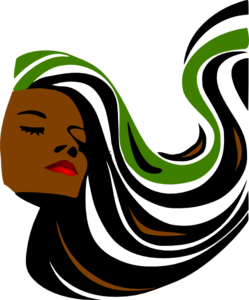
As US Black consumers continue to embrace the natural hair movement, its impact is greatly shaping the US Black haircare market. New research from Mintel reveals that sales of styling products have increased 26.8 percent from 2013 to estimated 2015, reaching $946 million, now comprising 35 percent of Black haircare sales, a significant increase from the 16 percent it represents in the total haircare market.
The move to natural has negatively affected sales of relaxers, which dropped 18.6 percent from 2013-2015. Furthermore, the segment is projected to lose its spot as the second-largest in the Black haircare market – which also includes shampoo, conditioner and home hair color – to the smallest segment of the market by 2020. Sales of the overall Black haircare market in 2015 are an estimated $2.7 billion.*
51% of Black consumers use styling products compared to 34% of US consumers overall
Over half (51 percent) of Black consumers report using styling products compared to one third (34 percent) of consumers overall, with demand for these products showing no signs of slowing in the coming years as sales are projected to reach $1.4 billion by 2020.
Similarly, 27 percent of Black consumers agree that they like to experiment with different hair and fashion styles, and 50 percent agree their hair is an important part of their identity, leading to growth within the shampoo and conditioner segments, with shampoo showing market gains of 18.3 percent from 2013-2015 and conditioner sales increasing by 9.8 percent over the same span.
“The Black hair care industry has undergone quite a transformation over the past five years and that should continue heading into the next decade. As more and more Black consumers are embracing their natural self and walking away from relaxers, it is presenting opportunities for natural brands to enter the market. Our research indicates that wearing their natural hair makes Black women feel liberated, confident and different from others, giving them a tremendous sense of pride in being Black while displaying their natural beauty,” said Tonya Roberts, Multicultural Analyst at Mintel. “The prominence of the market reflects the high price tag of many natural hair care products, but consumers appear willing to pay the price for a natural look.”
Mintel research shows that the natural hair movement comes at a time when image is everything to Blacks, as half (49 percent) of Black consumers agree it’s important to always look their best, regardless of the circumstances. Another 38 percent agree that they do whatever they can to look as attractive as possible. The drive to not just keep up appearances, but continuously improve points to the one third (32 percent) of Black consumers who agree that many of the beauty and grooming products they use help them look their best and the 30 percent who enjoy trying new haircare and beauty/grooming products.
38% of Black consumers report that they are constantly looking for ways to improve their appearance
Nearly two in five (38 percent) Black consumers report that they are constantly looking for ways to improve their appearance, and in the quest to look their best, they are open to trying various hairstyles. Mintel research shows that 35 percent of Blacks who wear their natural hair also color their hair at least once per month. However, while 20 percent of Black consumers buy a variety of products for the different hairstyles they wear, a similar amount of consumers report having trouble finding Black haircare products that fit their diverse range of hairstyles, and 19 percent of Blacks have bought multiple hair care products because they can’t find the right product that works for them.
“While it’s no surprise that consumers want to look good, appearance has a major impact on Black consumers’ overall well-being. To look their best, Blacks find it worthwhile to invest their time and money to alter hairstyles, going as far as coloring their hair at home on a monthly basis. This behavior, coupled with Black consumers’ willingness to purchase the wide range of readily available natural hair care products that have entered the market in recent years, should be a driver for the category’s growth moving forward, as many Blacks enjoy shopping for, and trying, new hair care products,” continued Roberts.
The weave, extension and wig segment remains popular in the wake of both market and consumer shifts toward natural hair products and away from relaxers. In 2014, Mintel found that 44 percent of Black women reported having a weave, wig or extensions in the previous 12 months with 38 percent saying they planned to have them in the upcoming 12 months.
What’s more, three in five (63 percent) Black women purchased wigs, weaves, extensions or styling tools from local independent beauty supply stores in the last six months, averaging an annual spend of $239 (vs $173 for Black men), with 10 percent of Black women spending over $250 annually. Further suggesting weaves, wigs and extensions are here to stay, 81 percent of Black women prefer an effective, no-fuss beauty/grooming routine, and 84 percent prefer hairstyles that are simple and easy to do themselves.
“Even as Black consumers showcase a variety of hairstyles and embrace their natural hair, wigs, weaves and extensions have held their ground. Black women are spending a tremendous amount on these products annually, but they remain essential among a wide range of Black haircare consumers as they fulfill the desire to switch up hairstyles while also allowing for a simple, no-fuss daily beauty and grooming routine,” concluded Roberts.
*As of 2015, Mintel’s Black haircare market includes sales from mainstream beauty brands and local independent beauty supply stores. Market sales do not include hair accessories (such as brushes, hair clips, hair pins, and headbands) or wigs, weaves and extensions.
Press copies of the Black Consumers and Haircare US 2015 report and interviews with Tonya Roberts, Multicultural Analyst, are available on request from the press office.
Recent Comments